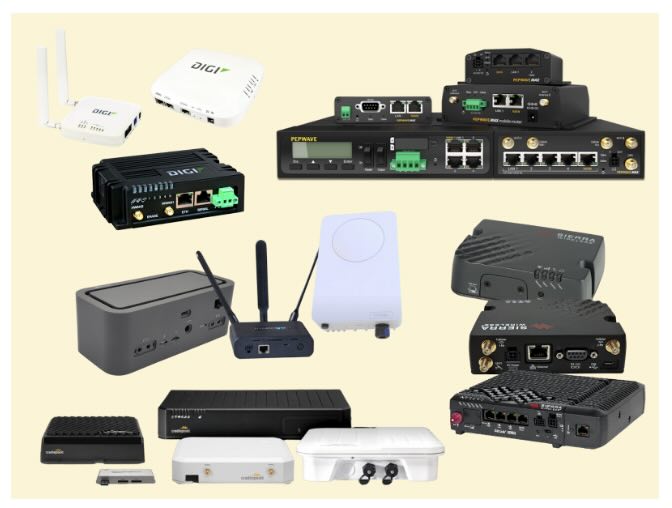



You may have heard the term “Cat” before when it comes to Ethernet cables (e.g. Cat 5, Cat 6), but what about when someone is talking about cellular? “Cat” refers to the category of a 4G LTE modem (5G does NOT use categories). 4G LTE (Long Term Evolution) is a cellular technology in which both voice and data service can operate.
Categories are used to define the performance specs of the LTE device. They range from 1 to 22 and differ with regards to the frequency band support as well as the upload and download speeds they are capable of running. For example, Cat 1 modems can download at up to 10 Mbps (megabits), while Cat 22 modems are going to receive download speeds of up to 4 Gbps (gigabits).
Found on some Inseego 5G routers, this is the closest you can get to a 5G network’s full capability. This is for power users looking for the most download and upload speed possible from a cellular network. Download speeds can max out up to 4000Mbps and upload speeds can get up to 450Mbps.
|
LTE Category |
Max Download Speed |
Max Upload Speed |
|
10 Mbps |
5 Mbps |
|
|
100 Mbps |
50 Mbps |
|
|
150 Mbps |
50 Mbps |
|
|
300 Mbps |
50 Mbps |
|
|
300 Mbps |
100 Mbps |
|
|
600 Mbps |
75 Mbps |
|
|
600 Mbps |
100 Mbps |
|
|
800 Mbps |
226 Mbps |
|
|
1200 Mbps |
300 Mbps |
|
|
1600 Mbps |
300 Mbps |
|
|
2000 Mbps |
300 Mbps |
|
|
Cat 22 |
4000 Mbps |
450 Mbps |
LTE categories are essential for determining the performance capabilities of cellular modems. Each category, ranging from Cat 1 to Cat 22, specifies the maximum download and upload speeds, as well as other features such as carrier aggregation and MIMO support. This categorization helps users choose the right modem based on their connectivity needs.
For instance, Cat 1 modems are designed for basic IoT applications, offering speeds up to 10 Mbps, while Cat 22 modems can achieve download speeds of up to 4 Gbps, making them suitable for high-demand applications like video streaming and online gaming. Understanding these categories enables users to make informed decisions when selecting devices for their specific use cases.
Selecting the appropriate LTE category is crucial for ensuring optimal performance in various applications. Factors such as the type of data usage, required speed, and network coverage should guide your choice. For example, if you only need basic connectivity for remote sensors, a Cat 1 modem may suffice, while a Cat 18 or Cat 22 modem would be better suited for high-bandwidth applications.
Additionally, consider the network environment and potential future upgrades. As technology advances, opting for a higher category modem can provide longevity and adaptability to evolving network standards. This foresight can save costs and improve efficiency in the long run.
Higher LTE categories offer numerous benefits, including faster data speeds, improved network reliability, and enhanced user experiences. With advancements in technology, higher categories like Cat 18 and Cat 22 support features such as carrier aggregation, which allows for the combination of multiple frequency bands to increase bandwidth and reduce latency.
Moreover, these higher categories often come with advanced MIMO (Multiple Input Multiple Output) technology, enabling better signal quality and capacity. This makes them ideal for environments with high user density, such as urban areas or during large events, where network congestion can significantly impact performance.
The future of LTE technology continues to evolve, with ongoing enhancements aimed at increasing speed, capacity, and efficiency. As 5G technology rolls out, understanding LTE categories remains pertinent, especially for users transitioning from 4G LTE to 5G networks. LTE will still play a vital role in providing coverage where 5G is not yet available.
Emerging technologies and standards are expected to further refine LTE categories, leading to even faster speeds and improved connectivity options. Keeping abreast of these developments will help users leverage the best available technology to meet their connectivity needs effectively.
